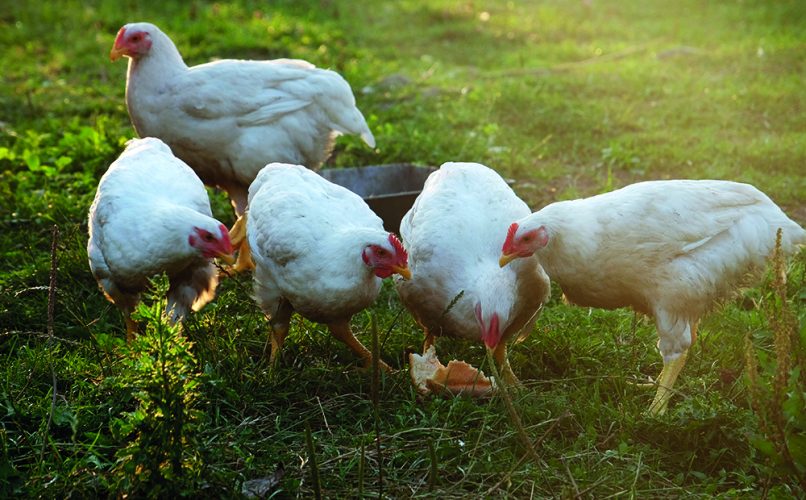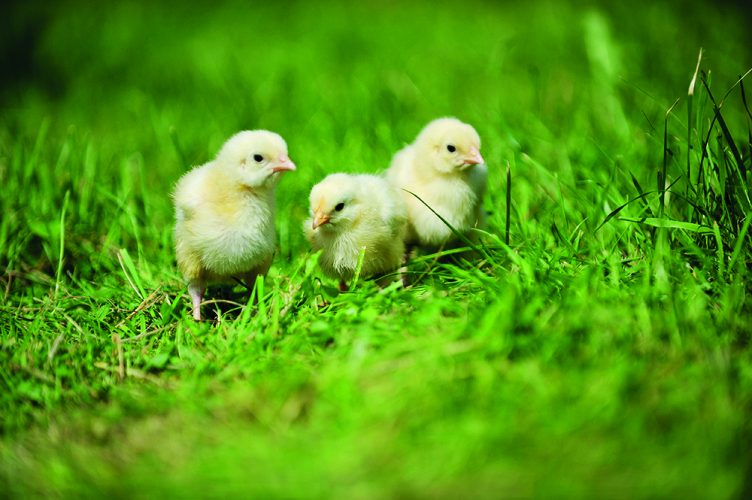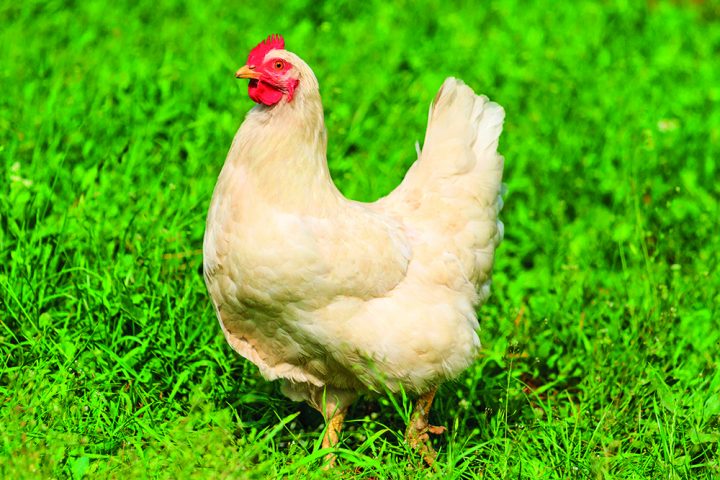Dr Michael Rothrock – Ensuring Food Safety of Pasture-Raised Chicken
Pasture-raised chicken is viewed as a more ethical option compared to that reared in overcrowded barns. However, pasture-raised birds are more likely to come in contact with bacterial pathogens that can be dangerous to consumers. Dr Michael Rothrock and his colleagues, at the Egg Safety and Quality Research Unit of the United States Department of Agriculture – Agricultural Research Service, investigate how environmental factors can lead to the contamination of pasture-raised chicken with harmful bacteria. Through their research, the team hopes to find ways of ensuring the safety of this popular food.
Potential Effects on Public Health
Pasture-raised chicken meat is becoming increasingly popular, primarily due to a greater concern for animal welfare. Rather than being confined to overcrowded barns, pasture-raised chickens are allowed to roam on pastureland, where they are free to express their natural behaviours, such as scratching, foraging and dustbathing.
However, due to the fewer management controls of pasture-raised chickens – including exposure to wild birds and weather – there is a higher risk of birds contracting bacterial pathogens when compared to conventional farming systems. Pathogens such as Salmonella, Campylobacter, Listeria and E. coli are of great concern in the poultry farming industry, as they can remain in the meat and cause consumers to become extremely ill with food poisoning.
Symptoms of food poisoning vary widely, depending on the bacteria present, but can range from mild stomach problems, such as vomiting and cramps, to serious infections that lead to permanent neurological issues. The World Health Organisation estimates that 600 million people – about 1 in 10 people – suffer from food poisoning every year, with around 420,000 fatalities. Foodborne illnesses are particularly dangerous for children and elderly people.
Despite the enormity of this public heath issue, Dr Michael Rothrock of the United States Department of Agriculture noticed that studies investigating the impact of environmental factors on infection rates in pasture-raised poultry were scarce. Therefore, over a series of studies, his team explored how several factors, including weather, diet and management practices, can influence the susceptibility of pasture-raised chickens to become infected with a foodborne pathogen, such as Salmonella, Campylobacter, Listeria or E. coli.
Dr Rothrock explains that a thorough understanding of the factors leading to poultry meat contamination is essential to ensure the safety of these products when sold on the market. ‘Therefore, we have been focusing on the pastured poultry model of chicken farming, with a specific focus on changes throughout the farm to fork continuum and how it impacts food safety,’ he says.

Antibiotic Resistance
Dr Rothrock and his colleagues began by analysing antibiotic resistance in foodborne pathogens. To do this, they isolated Salmonella, Campylobacter, Listeria and E. coli from live animals and carcasses, from 15 flocks in six antibiotic-free, pasture-raised chicken farms.
Although no antibiotics were used on the farms, the researchers found that numerous animals carried bacteria that were resistant to three or more antibiotics, meeting the definition of multidrug resistant bacteria. The team found an extremely complex and dynamic antibiotic resistance pattern. Even within the same animal, bacterial profiles from different locations were very different.
Dr Rothrock explains that the main lesson from this study is the need to take this bacterial variation into account in future studies. ‘Although this is a limited study related to a specific alternative animal production system, the results demonstrate the necessity of including background resistance assessments in future studies,’ he states.

Microbiome and Immunity
A second factor affecting foodborne pathogen prevalence on farms is the birds’ gut microbiomes – the communities of bacteria living within the intestines of the chickens. Just like in humans, the gut microbiome is known to affect many different functions in chickens, including nutrient utilisation, as well as resistance to infection.
To test the importance of this factor, Dr Rothrock and his team analysed fecal and soil samples collected from two farms raising the same breed of chicken with the same diet. Unsurprisingly, the same main groups of bacteria were found in all animals from both farms: Firmicutes, Proteobacteria, Actinobacteria and Bacteroidetes, which are all known to dominate the microbiomes of chickens.
Within these groups, however, the team found significant differences in certain bacteria between the farms, suggesting that even small differences in the birds’ environment were enough to create different microbiomes. ‘Although both farms in this study raised the same chicken breed fed the same diet, each pastured poultry farm possessed their own ecology that shapes the structure and composition of the poultry-related microbiomes,’ says Dr Rothrock.
When it came to foodborne pathogens, his team isolated Listeria in only a few animals, and Salmonella from a single sample. However, they discovered Campylobacter and E. coli in all samples, demonstrating the resilience of these bacterial pathogens in different environments.
Curiously, while there were significant differences in the microbiomes between the farms from live birds and those that were recently slaughtered, the final microbiomes (measured after storage) were more uniform between farms. This was rather unexpected, not only because the birds’ microbiomes had been different up to this point, but also because each farm used a different method of storing the carcasses: one of the farms stored carcasses at 4°C for one day; while the other stored them at −20°C for two weeks. Dr Rothrock expected that the difference in storage temperature (refrigeration versus freezing) would affect the bacteria that were present, but it did not.
This resilience to change at this stage led the research team to speculate about a core microbiome that cannot be changed regardless of the procedures used. However, further research is needed to explore this idea.
‘We have been focusing on the pastured poultry model of chicken farming, with a specific focus on changes throughout the farm to fork continuum and how it impacts food safety.’

The Impact of Diet
A third factor that the team investigated is diet. In both conventional and pasture-raised farming systems, most poultry feeds use soybean as a main source of protein. There are certain compounds in soy that are believed to be beneficial for human health, but in recent years, soy-based products have become slightly controversial with many consumers. One of the reasons is an increase in allergy cases, while another is the unsustainable farming practices that are often used to grow soybean crops.
Therefore, many consumers are now demanding soy-free products, and this extends to chickens fed a soy-free diet. To test the merits of this approach, Dr Rothrock and his team designed an experiment to compare two different formulations: a traditional soy-based diet and a pea-based diet. Again, the researchers collected samples at several stages of the production chain, starting with the live birds all the way through to the processing and storage stages.
The team found that diet appeared to have a great influence on the microbiomes of the birds. Compared to chickens fed a soy-based diet, the researchers noticed reduced levels of the pathogen Campylobacter in birds fed the pea-based diet. Given that the use of antibiotics in human food production is increasingly frowned upon, controlling this dangerous pathogen through simple diet modification could represent an excellent strategy for ensuring food safety.
A possible explanation for this effect relates to the production of mucin in the intestinal tract of the birds. It turns out that pea-based diets do not promote the secretion of mucin as much as a soy-based diet, which is essential for the survival of this pathogen in the poultry gut.
‘Our data suggest that replacing soy with peas in the production of pasture-raised chickens is a viable strategy for producers,’ says Dr Rothrock. ‘Not only does such a dietary switch appeal to a niche of potential consumers, but it also can reduce the presence of important foodborne pathogens in the final product presented to consumers.’

Rain or Shine
Finally, the team investigated the influence of weather on the prevalence of dangerous foodborne pathogens. Although pasture-raised chickens are exposed to the elements on a daily basis, there have been very few studies exploring how variables such as temperature and wind affect levels of pathogens in these birds.
To address this shortfall, Dr Rothrock and his team decided to compare how certain meteorological conditions related to levels of Listeria in soil and fecal samples in pasture-raised chicken farms. Out of a long list of variables, the team found that humidity, temperature and wind were most strongly related to levels of Listeria. The team found that even at temperatures as low as 1–2°C, it was still possible to find this pathogen.
‘The generated models present meteorological factors that are predicted to increase the likelihood of Listeria contamination in the environment of pastured poultry farms,’ says Dr Rothrock. ‘The findings can assist farmers and risk managers in important variables to account for to reduce the risk of Listeria contamination in the environment of their farms.’
As pasture-raised chicken meat continues to increase in popularity, there is a need to develop new management approaches to reduce serious illness and mortality associated with foodborne pathogens. Understanding the factors that affect levels of these pathogens – such as diet and weather – is the first step on this journey.
Reference
https://doi.org/10.33548/SCIENTIA400
Meet the researcher

Dr Michael Rothrock
Egg Safety & Quality Research Unit
US National Poultry Research Center
USDA-ARS
Athens, GA
USA
Dr Michael Rothrock completed his PhD at Arizona State University in 2005, followed by two positions as a research associate at the United States Department of Agriculture (USDA). Since 2014, he has been working as a microbiologist at the Egg Safety and Quality Research Unit, located at the US National Poultry Research Center (USNPRC) in Athens, Georgia. Dr Rothrock’s main objective relates to food safety in pasture-raised poultry systems. In his varied research projects, Dr Rothrock works collaboratively to tackle complex research questions, working closely with engineers, poultry scientists, infectious disease microbiologists, chemists, and various specialists within the biological sciences. He believes that using both traditional and new molecular tools is the best approach to understand the ecological role of bacterial pathogens within poultry production systems.
CONTACT
W: https://www.ars.usda.gov/people-locations/person/?person-id=49365
KEY COLLABORATORS
Dr Steve Ricke, University of Arkansas
Dr Abhinav Misra, University of Georgia
Dr Jean Guard, USDA-ARS
Dr Todd Callaway, University of Georgia
FUNDING
USDA-ARS CRIS #6040-32000-011-00-D ‘Reduction of Invasive Salmonella enterica in Poultry through Genomics, Phenomics and Field Investigations of Small Multi-Species Farm Environments’
FURTHER READING
C Golden, M Rothrock, A Mishra, Comparison between random forest and gradient boosting machine methods for predicting Listeria spp. prevalence in the environment of pastured poultry farms, Food Research International, 2019, 122, 47–55.
MJ Rothrock, A Locatelli, Importance of farm environment to shape poultry-related microbiomes throughout the farm-to-fork continuum of pasture-raised broiler flocks, Frontiers in Sustainable Food Systems, 2019, 3, 48.
JM Lourenco, MJ Rothrock, YM Sanad, TR Callaway, The effects of feeding a soybean-based or soy-free diet on the gut microbiome of pasture-raised chickens throughout their lifecycle, 2019, Frontiers in Sustainable Food Systems, 3, 36.
Z Shi, MJ Rothrock, SC Ricke, Applications of microbiome analyses in alternative poultry broiler production systems, 2019, Frontiers in Veterinary Science, 6, 24.
M Rothrock, K Hiett, J Guard, C Jackson, Antibiotic Resistance Patterns of Major Zoonotic Pathogens from All-Natural, Antibiotic-Free, Pasture-Raised Broiler Flocks in the Southeastern United States, Journal of Environmental Quality, 2016, 45, 593–603

Creative Commons Licence
(CC BY 4.0)
This work is licensed under a Creative Commons Attribution 4.0 International License. 
What does this mean?
Share: You can copy and redistribute the material in any medium or format
Adapt: You can change, and build upon the material for any purpose, even commercially.
Credit: You must give appropriate credit, provide a link to the license, and indicate if changes were made.
More articles you may like
Grandmothers: Innovation Through Tradition
Grandmother Project – Change through Culture (GMP) is an organisation dedicated to documenting the role of grandmothers and demonstrating the effectiveness of grandmother-inclusive strategies in improving the health and well-being of women, children, and adolescents. GMP’s groundbreaking work challenges conventional wisdom to transform community-based interventions in Africa and beyond, harnessing a powerful but often overlooked resource: the wisdom and influence of grandmothers.
Dr Robert Larkin | Cultivating Change to Improve Soil Health and Increase Potato Yield
Environmental quality and food production are facing the pressing challenges of climate change and global population growth. Dr Robert Larkin from the United States Department of Agriculture-Agricultural Research Service (USDA-ARS) and a team of plant scientists developed and tested a range of crop management systems to help overcome these compounding challenges. Their work is improving soil health and increasing the yield of potato crops, contributing to the future food security of nations.
Professor Giorgio Buttazzo | Artificial Intelligence and a Crossroads for Humanity
Where do we stand with artificial intelligence? Might machines take over our jobs? Can machines become conscious? Might we be harmed by robots? What is the future of humanity? Professor Giorgio Buttazzo of Scuola Superiore Sant’Anna is an expert in artificial intelligence and neural networks. In a recent publication, he provides considered insights into some of the most pressing questions surrounding artificial intelligence and humanity.
Dr Ralf Adam | New Technologies Shaping the Future of Oral Hygiene
Understanding the efficiency of various toothbrush technologies is essential for achieving optimal oral health. Dr Ralf Adam, who leads a dedicated team at Procter & Gamble in Germany, is keen to investigate the complexities of these technologies. His team have provided new insights into the best toothbrush types for plaque removal and the maintenance of gum health. By highlighting the importance of informed oral care decisions and ongoing investigations, this vital research works towards ensuring everyone can achieve a brighter, healthier smile.




